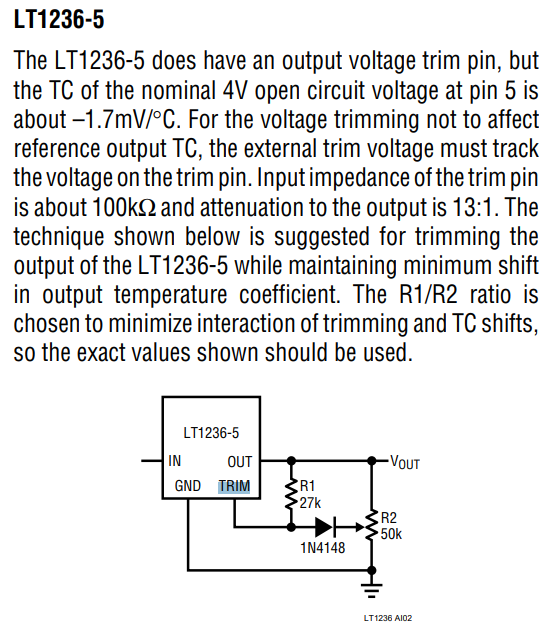We could estimate it manually, but it's easier and probably more accurate to just simulate it in LTspice:

With the pot at 0/0.5/1 rotation we get a voltage at the
trim terminal of 0.5264/3.673/4.7845V
It is stated in the datasheet that the effect at the trim pin is reduced by 13:1 and the open-circuit voltage is 4V.
So we would expect a total range of 327mV and we would expect the voltage to be 25mV low with the pot at mid-scale and 60mV high with the pot all the way up.
So a range of +60mV to -267mV with -25mV at mid-scale.
As unsolicited advice, I would not attempt to trim the 5V on this part in that way. There's way too much trim range (and thus too much sensitivity to pot position) for a part that's +/-2.5mV or +/-5mV (depending on grade) and plenty of opportunity to screw up the tempco because of matching between temperature of the diode and IC die temperature etc. I'd use a different method or a different part.


